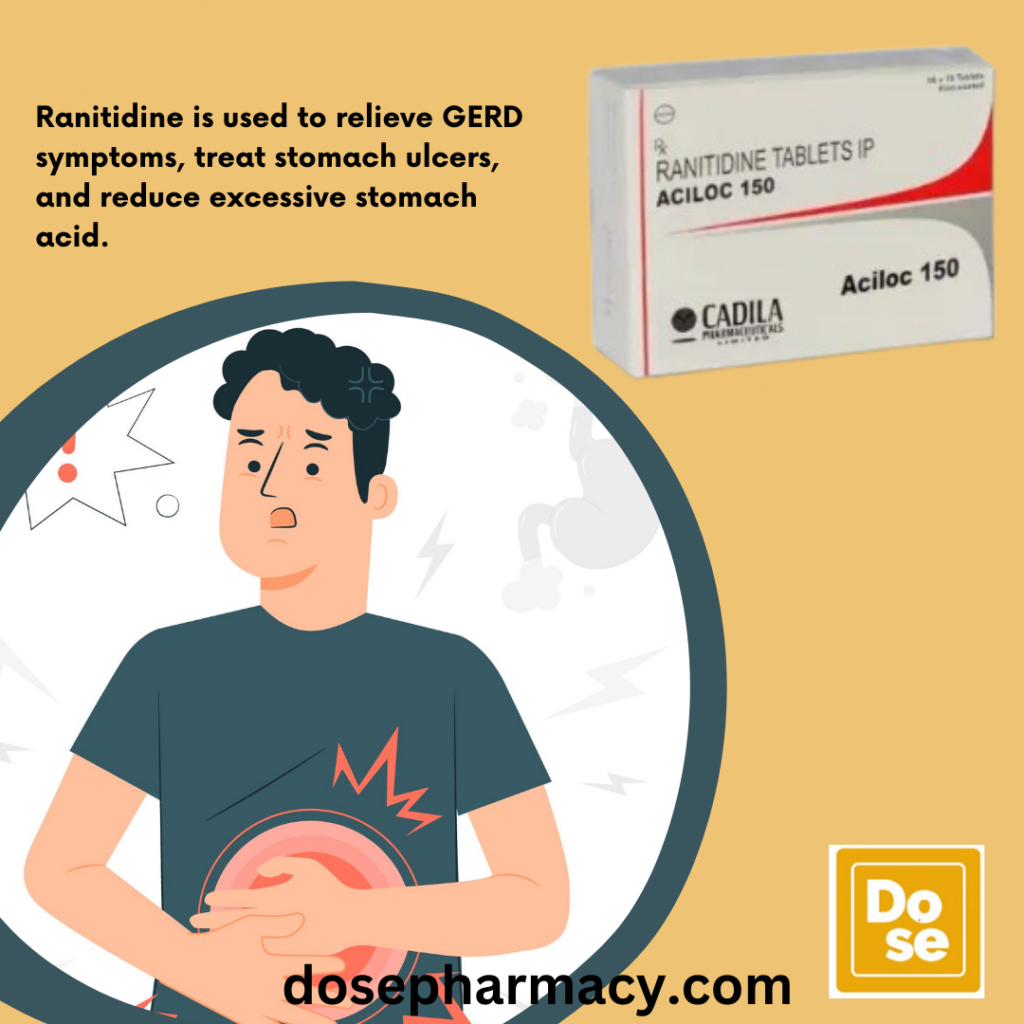Stomach ulcers, or gastric ulcers, are open sores that form on the stomach’s inner lining. For many, they are more than just a fleeting discomfort — they’re a source of constant pain, frustration, and a barrier to enjoying life. While these ulcers can wreak havoc, the journey toward relief often begins with a small pill: Ranitidine 150 mg.
In this blog, we’ll explore how stomach ulcers develop, the symptoms they present, and how Ranitidine 150 mg has played a crucial role in bringing comfort to millions. By the end, you’ll understand why this medication became a cornerstone in the treatment of stomach ulcers and how it’s paving the way for people to reclaim their lives.
Understanding Stomach Ulcers
The stomach produces hydrochloric acid to aid digestion. However, when there’s an imbalance between the digestive fluids and the protective mucus lining the stomach, ulcers can form. This imbalance is often caused by factors like:
- Helicobacter pylori (H. pylori) infection: This bacterium is a leading cause of stomach ulcers.
- Prolonged NSAID use: Pain relievers like ibuprofen and aspirin can irritate the stomach lining over time.
- Excessive alcohol consumption: Alcohol weakens the stomach’s natural defenses.
- Stress and spicy foods: While not direct causes, they can aggravate symptoms.
Symptoms of Stomach Ulcers
Ulcers can manifest through a variety of symptoms, such as:
- Burning pain in the stomach: Often worse when the stomach is empty.
- Nausea: A frequent companion to gastric discomfort.
- Bloating and burping: A sign of digestive distress.
- Unexplained weight loss: Due to changes in appetite and pain while eating.
- Vomiting blood or black stools: Indicative of a bleeding ulcer, a medical emergency.
Ranitidine 150 mg: A Game-Changer
Ranitidine is available at online pharmacy. It is an H2 receptor antagonist, was introduced as a revolutionary solution to treat stomach ulcers. It works by reducing stomach acid production, allowing the ulcer to heal naturally. By blocking histamine, a chemical that stimulates acid secretion, Ranitidine ensures that the stomach environment becomes less harsh, promoting tissue repair.
The Benefits of Ranitidine 150 mg
- Effective Acid Reduction: Within hours, patients often experience relief from burning sensations.
- Healing Ulcers: By lowering acidity, Ranitidine creates a supportive environment for healing.
- Prevention of New Ulcers: For individuals prone to ulcers, it helps prevent recurrences.
- Ease of Use: With a standard dosage of 150 mg twice daily or 300 mg at bedtime, adherence is simple.
Real-Life Transformation
Take Sarah, for example. A 35-year-old marketing professional, she suffered for months with a gnawing pain in her stomach, worsened by skipped meals and late-night work hours. After being diagnosed with a stomach ulcer and starting Ranitidine 150 mg, Sarah’s life turned around. Within weeks, her pain subsided, and by the end of the prescribed course, her ulcer had completely healed.
Stories like Sarah’s are not uncommon. For decades, Ranitidine was a lifeline for individuals with stomach ulcers.
Safety and Concerns
While Ranitidine was hailed as a miracle drug, recent controversies raised questions about its safety. In 2019, the FDA issued recalls due to concerns over NDMA (N-Nitrosodimethylamine), a potential carcinogen, found in some batches. As a result, the drug was pulled from many markets, and alternatives like famotidine (Pepcid) and proton pump inhibitors (PPIs) gained prominence.
The Alternatives
For those unable to use Ranitidine, the medical field offers other options:
- Proton Pump Inhibitors (PPIs): Medications like omeprazole and pantoprazole provide longer-lasting acid suppression.
- Antacids: Quick but short-lived relief.
- Lifestyle Changes: Reducing stress, quitting smoking, and moderating alcohol intake can significantly impact ulcer healing.
Hope on the Horizon
Despite its withdrawal, the legacy of Ranitidine 150 mg endures. Research continues to explore safer formulations and better alternatives to manage stomach acid and ulcers effectively. The goal remains the same: to help patients lead pain-free lives.
Preventing Stomach Ulcers
An ounce of prevention is worth a pound of cure. Here’s how you can reduce your risk:
- Mind Your Medications: Use NSAIDs sparingly and always with food.
- Adopt a Balanced Diet: Incorporate fiber-rich and probiotic foods to support gut health.
- Limit Alcohol and Smoking: Both compromise the stomach’s protective barriers.
- Manage Stress: Engage in yoga, meditation, or hobbies that calm the mind.
- Get Tested for H. pylori: If you have recurrent stomach issues, a simple breath or stool test can detect this bacterium.
A Bright Future for Ulcer Patients
Stomach ulcers can feel like an insurmountable challenge, but advances in medical science have given patients renewed hope. While Ranitidine 150 mg may no longer be a go-to remedy, its impact reminds us of the importance of accessible, effective treatments.
By combining modern medicine with proactive lifestyle choices, individuals can overcome stomach ulcers and reclaim their quality of life. If you or someone you know is struggling, consult a healthcare professional and take the first step toward a healthier future.





